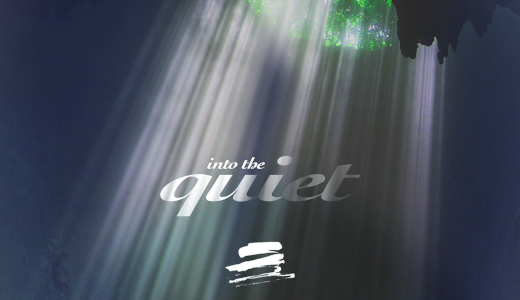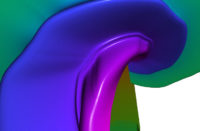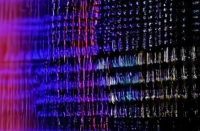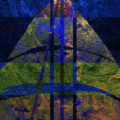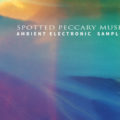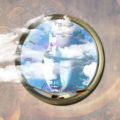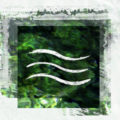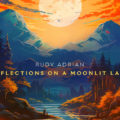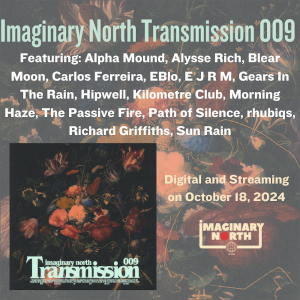Into The Quiet delves deeply into the vastness of empty spaces filled with sounds of the adoration of the Earth, seeking an understanding of natural phenomena, and finding commonalities between all living things, things that are best appreciated as a whole.

An alpine forest spa for your ears
Oboe, English horn, concert flute, infused with Taos drums and various percussion, so smooth and delicate. I adore woodwind instrumental atmospherics, but the electronica (Yamaha Motif; Roland V-synth GT; Roland Integra; Spectrasonics Omnisphere) is what makes this loving expression complete. This is not Classical music, and this is not the sounds of nature itself. What I hear is a unique artistic interpretation of nature, fantastic instrumental Earth inspired themes, sustained intricate woodwinds with synthesizers beautifully expressed and calming to listen to. Sometimes I want to say that Into the Quiet sounds like an alpine forest spa for your ears, but that sounds hard to prove. Fine art goes with nature.
Hear the call, the voice opening the journey, haunting and comforting if that is possible. “Sleeping Giants” (4:35) is calming and a little bit spooky, wondering about those giants, and what if they awaken? No worries, this musical genre can provide a powerful soporific as well as an intricate instrumental reward, moments of extraordinary dialog and singular voices combining together, synthesizers breathing into some of the horn tones. Now imagine plunging away from the world, into unexpected freedom and the vast unknown. I see the title of the second track, “Falling Away From the Earth” (6:22) and I am thinking about falling. The actual sound is very gentle and embryonic, secure and comforting. How strange, now the Earth is falling away, or the reverse, and everything is serene. “Into the Quiet” (8:32) I hear landscapes that are soft, with pastel fields waving in the distance, and I think I feel the fingers of cool coming down my spine.
I love camping at night and finding so many more stars when I look up. Maybe bliss is real and must be practiced whenever possible. “Reaching the Ambient” (4:23) is a calm medicine that is not medicine, it is a comfortable place that you might seek when you want to hear something still and calm, or whatever might be found out there beyond still and calm. Finding “Refuge” (5:08), waking up in a calm but uncertain place, a strange place to explore. Some gentle complexities come into focus and then change, now the sunshine is gloriously pouring down into a place where light is rare. We are somewhere below the surface looking up into the sky through a tear in the fabric of classicism.
Gentle complexities come into focus and then change ::
The “Hall of Whispers” (5:36), this is where the ghosts are. Constantly extraordinary, I ponder medieval futurism, where I hear regal elements and processional journeys through forests and mountains with castles in the distance, weaving instrumental moments with electronic phantom choirs somewhere out there. Think floral articulation, with ghosts. It expands and continues, layers of sound changing into a more focused melodic theme persistently mixing bits making an interesting mosaic to puzzle imagine uncovering the tapestry; “Elements” (4:11), we are in a garden and the night is uncertain. Finally, “Violet Night” (4:27) suggests rich colors in the fading light, a song of memories and discovery where all is calm and restful. Perhaps an anthem to the theme of good healthy refreshing sleep.
Deborah Martin’s passion is to visualize and create music that takes each listener on a journey through time and space, exploring the depths of thematic composition through the process of creative layering of structured studio recorded compositions and live recordings of instruments, blending them into a world of ambient electronic expression. The synergy and depth of the sounds and the “stillness” in the layers that you can hear in her collaboration with Jill Haley combines the electronic music with oboe and English horn. There is something very magical about the serenity of nature, and Jill has connected her music with the spirit of the wilderness. “To hear the music that dwells in all of us, one must go into the quiet for the sound to emerge. Only when we have space and silence, can the music be heard.”
Jill Haley is an accomplished symphonic orchestra player, teacher, and church musician, an oboist, English horn player, pianist and composer who visits National Parks in the United States, often as an Artist-in-Residence, and composes music about the Park while living there. Some of the parks she has created music in and about include Montana’s Glacier National Park; Mesa Verde National Park, Colorado; Badlands National Park, South Dakota; Wrangell/St. Elias National Park, Alaska; Bandelier National Monument, New Mexico; and Big Cypress National Preserve in Florida.
Into the Quiet is the second album from Deborah Martin and Jill Haley; to me the sound builds upon and expands their natural combination of intricate, gentle and sweet listening soundcraft. For the first album, The Silence Of Grace, my thoughts were immediately guided into the wonderment of the wilderness. In places, it feels like visiting a different time, hence my earlier reference to medieval futurism. Into The Quiet delves deeply into the vastness of empty spaces filled with sounds of the adoration of the Earth, seeking an understanding of natural phenomena, and finding commonalities between all living things, things that are best appreciated as a whole.
Into The Quiet is available on Spotted Peccary Music. [Bandcamp | Site]






